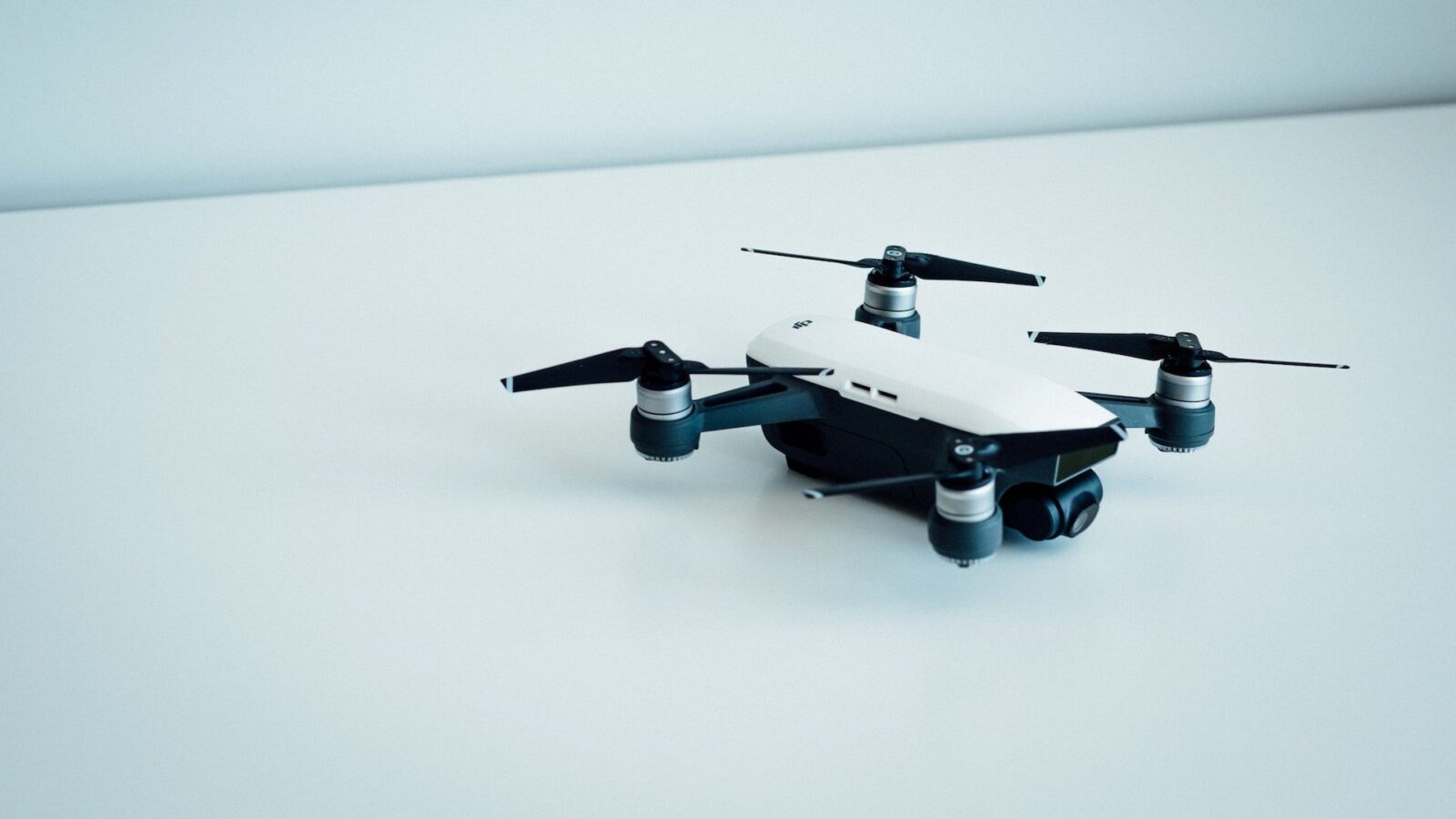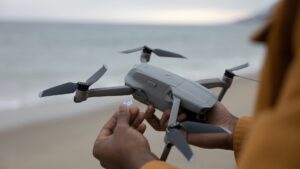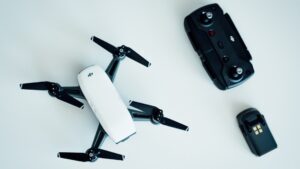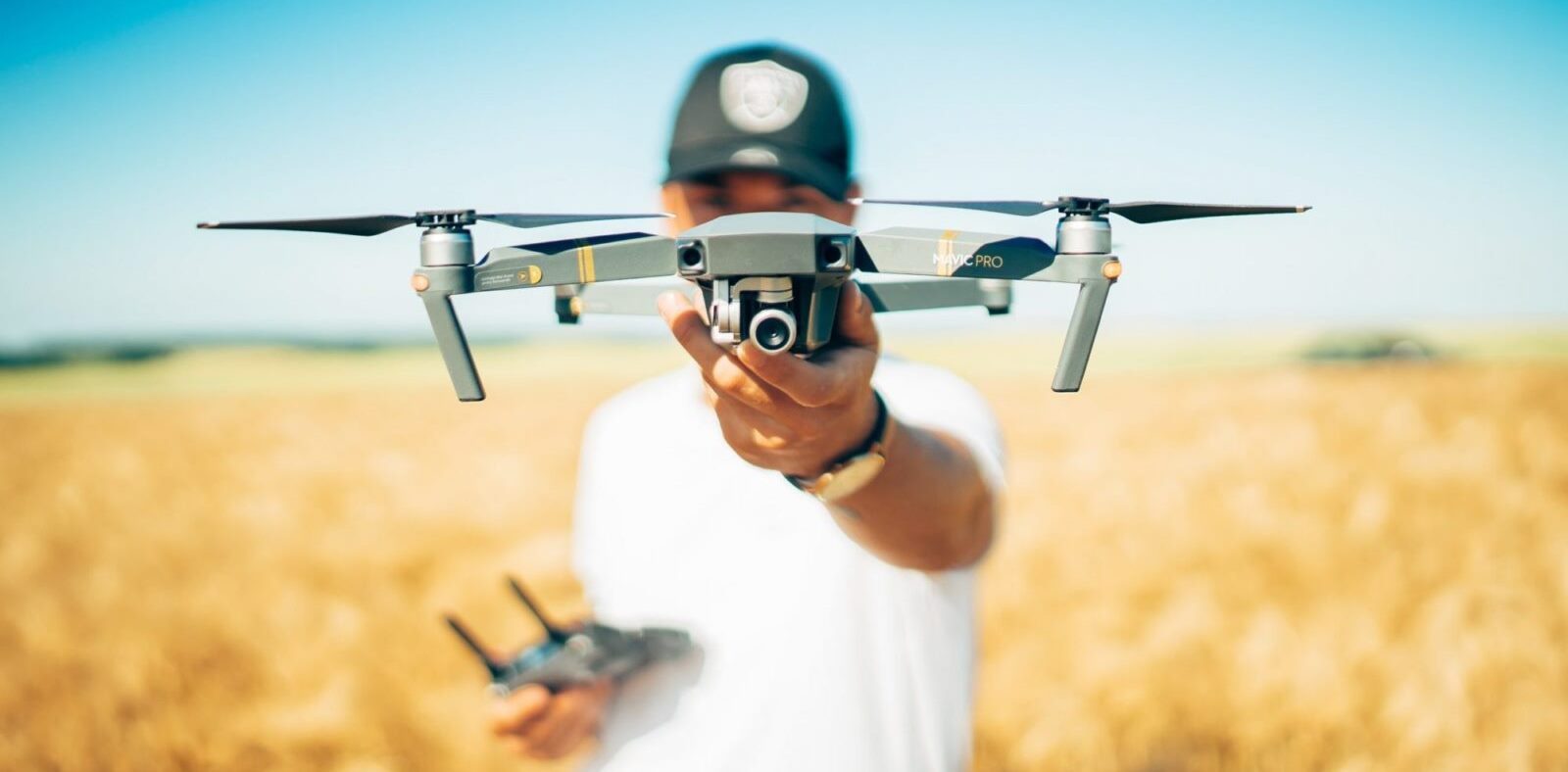
A drone rests on a white table.
If you are storing electronics, proceed cautiously, regardless of whether you are considering long-term or short-term storage. You cannot simply place a drone in your garage or storage unit and leave it unattended. Many undesirable outcomes can occur if you do this, depending on your location, the time of year, and the duration of your leave. Therefore, if you wish to store your drone safely, we are here to explain how to prepare your drone for short-term storage properly.
Conduct a Visual Inspection
Before storing your drone, whether for a day or indefinitely, carefully inspect it. Check that everything is in working order. If you leave your drone with someone else, you should take photos to ensure that nothing has happened while it was not in your possession. This step is critical, especially if you plan to store your drone after flying it in adverse weather conditions. Therefore, to make sure that your drone is okay for storage, you should:
- Examine the outside shell for any cracks.
- Look for indications of deterioration.
- Examine the gimbal for damage or debris.
- Check the camera lens for dust and grime.
- Look at the rotors, propellers, and battery.
If you spot any problems, fixing them is generally a good idea before you store your drone. Nothing is more infuriating than taking your drone out of storage and preparing for a flight only to discover that it no longer works, or even worse, crashing it mid-flight because something went wrong.

Before storing your drone, ensure it is in good working condition.
Thoroughly Clean Your Drone
Cleaning drones thoroughly is one of the most crucial steps in preparing them for short-term storage. Cleaning your drone entails removing obvious debris from the shell, gimbal, and camera, but it also extends beyond that. It would be best if you occasionally disassembled your drone to remove built-up dust and debris. If you don’t want to go through the trouble of doing this, a blower brush or canned air may help remove dust from hard-to-reach areas, such as the gimbal crevices or propeller fittings. Use a pipe cleaner or soft brush to remove dust from cracks and crevices gently. Some drones come with these tools when you order them. After you brush your drone clean, it’s time to wipe off the drone’s body with a gentle, clean microfiber cloth.
You may also need to clean and grease the motors on certain drones. If you’re unsure whether your drone needs greasing, you can search online or refer to your user manual for guidance. It is good practice to do this if you want to prepare your drones for short-term storage. However, if you plan to store it for an extended period, all these steps may be necessary.
Drain the Batteries of Your Drone
Lithium-ion batteries are notorious for catching fire. As a result, it is advisable to drain your drone’s battery before storing it. First and foremost, inspect the batteries for any irregularities. A healthy battery that has not been overheated and has no punctures or puffs should be safe to store. If the batteries are in good condition, the next step is to discharge them to approximately 50% of their power. Many manufacturers believe that having a battery at half capacity benefits its longevity. That is why, when you buy a new drone or any other device, the battery is always around 50% charged when you turn it on for the first time. To keep your battery from deteriorating, follow the manufacturer’s discharge instructions.

To prevent your battery from deteriorating, store it at about half its capacity.
Carefully Pack Your Drone
When storing your drone, ensure all moving components are immobilized. You don’t want your drone to be able to move around at all. You can use a strap to keep the gimbal tight. Doing so will prevent damage to the gimbal and camera if it falls into storage. Furthermore, remove any non-integrated cameras from the gimbal before storing the drone. Taking the drone’s blades off is also a good idea. Doing this would help because the blades will make packing your drone harder. If you want to ensure your drone is as tightly packed as possible and avoid damaging the propellers, you must remove them.
Choose a Safe Space to Store Your Drone
Your work is not yet complete, even after you have taken the necessary steps to prepare drones for short-term storage. You will also need to find a secure location to keep it. Batteries and other electrical components of the drone and the controller can suffer irreparable damage if exposed to a humid environment. Moisture in the air may cause corrosion of metal components and mildew on plastic parts or packing materials. Therefore, keep your drone in a dry area away from humidity. When packing and preparing drones for short-term storage, consider inserting silica gel into the packaging to absorb moisture from the surrounding environment. When storing your drone, ensure it is kept in a moisture-free environment.
Conclusion
Whether you are preparing your drones for short-term storage because you are going out of town and want to keep them secure while you are away, or you are making a long-distance move and want to ensure that your drone is in a safe place for the duration, now you know what to do. Whether it is moving or looking for a secure storage solution, experts are the best assistance. Only by working with them can you keep your possessions safe.
That being said, now that we’ve covered how to prepare drones for short-term storage properly, you can pack your drone away with confidence. Drones are expensive gadgets, and it would be irresponsible not to take every precaution when storing them. Therefore, ensure you understand everything we’ve discussed today before storing your drone.





Comments are closed.